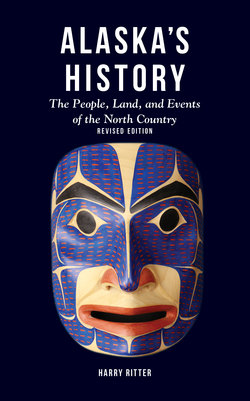Читать книгу Alaska's History, Revised Edition - Harry Ritter - Страница 10
На сайте Литреса книга снята с продажи.
ОглавлениеSnug Corner Cove, Prince William Sound. Drawing by John Webber, 1778.
ALASKA: THE GREAT LAND
ALASKA, PAST AND PRESENT
Gold and silver doors, St. Michael’s Cathedral, Sitka, late 1800s.
Alaska’s human history—from the prehistoric arrival of the earliest Siberian hunters to today’s Arctic Slope oil exploration—is unified by one simple but grand theme: people’s efforts to wrest a living from the region’s vast natural riches despite its extreme conditions.
Nature endowed the Great Land with wealth, scenery, and a scope surpassed by few regions of the earth. Alaska is a virtual subcontinent: Twice the size of Texas, it contains 16 percent of the United States’ land area. But its population remains small. At the time of the U.S. purchase in 1867, Alaska had about 30,000 people, more than 29,000 of them Native American. By 2018, despite statehood and the oil boom, its population had grown to an estimated 738,000.
Over the past 275 years, Alaska has seen a series of boom-and-bust “rushes” to exploit the land: rushes for fur, gold, copper, salmon, and oil. Some people came and stayed, simply because Alaska is like nowhere else—wild, extreme, and amazing. Still, the aim often has been to take the rewards of the land and sea, then enjoy them somewhere else. Many Alaskans see a recurring theme of neglect by federal authorities and exploitation by “outside interests.” While the notion is easily exaggerated, the fact remains that today, decades after becoming a state, much of Alaska’s economic fate remains under control of the Lower 48. Much of the Alaska fishing fleet, for example, is based not in Alaska, but in Washington state.
Over the past six decades, the development of a modern tourism industry has brought millions of visitors to the once-remote frontier in a veritable “tourist rush.” The more daring travelers motor north via the Alaska Highway, built during World War II. But most come by air or sea. The state-owned ferry system, the “Alaska Marine Highway,” has linked southeastern Alaska to British Columbia and Washington state since the 1960s. Each year, thousands of ferry travelers experience the stunning sea and landscapes of the Inside Passage. In the 1970s, the cruise ship industry met that same growing tourist demand by offering summertime excursions to the icy spectacles of Glacier Bay National Park and the Gulf of Alaska.
Visitors are drawn to Alaska by the region’s wild beauty and storied past. Alaska’s history has not always been happy. For traditional Native cultures as well as for some animal species, it is no exaggeration to say that at times it has been catastrophic. Yet to ignore the past denies us the chance to learn for the future. This book aims to supply a concise, informative, and entertaining account of Alaska’s history: at times heroic and surprising, foolish and sad, but always colorful and often downright thrilling.
